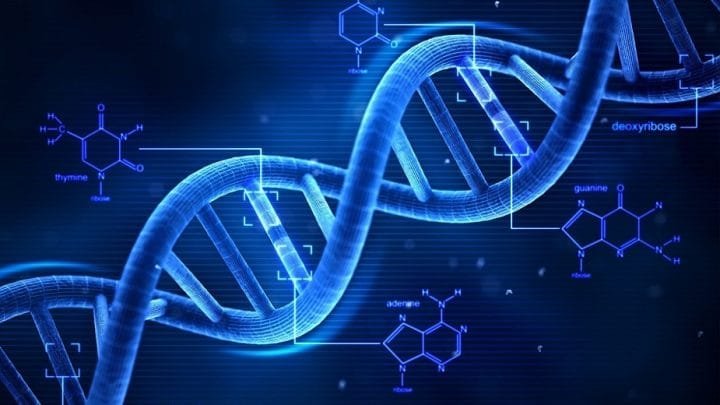Professional Quantum Resonance Magnetic Analyzer Supplier
What is quantum biosystems?
September 3, 2017
1)Quantum Sequencing™

Single Molecule Electronic Detection
A critical issue in medical research is the need for ultra-high-speed analysis of DNA sequences and ultra-sensitive, ultra-fast detection of viruses and allergens such as pollen. However, even leading global companies have so far been unable to develop the next-generation technology required to implement this.
The new technology we have developed—based on a gating-nanopore method, using tunneling current measurement—has the potential to change that. The U.S. National Institute of Health (NIH) has stated that our technology could lead to breakthroughs in ultra-high speed and ultra-sensitivity analysis that will never be possible using existing technologies.
Single molecule electronic detection provides the ultimate methodology for genome analysis. Our technology identifies base molecules by measuring tunnel current through nano-electrodes as DNA/RNA passes through nanogaps, and by calculating the current difference. Each chip has a nanogap through which only a single strand of DNA or RNA passes, and the device uses nanoelectrodes (one molecule-wide gap between electrodes) to measure tunnel current.
2)Why it’s so innovative

Bias free (PCR free)
High throughput
Epigenetics
Low cost
3)Original Inventor – Osaka University
Unlike currently used sequencers, this fourth generation sequencer will work at the ultimate level of single molecule detection.
Last year, Professor Kawai’s project team successfully demonstrated the principle, paving the way to practical applications.
DNA sequencer researchers and engineers worldwide are closely following this project’s results.
Quantum Biosystems is a biotech start-up of Osaka University, founded with the goal of finding rapid practical applications for the FIRST project’s research findings.
4)TECHNOLOGY
The world’s first commercial quantum sequencing systems
Our sensor: a breakthrough in molecular sensing

The result is a clear trace, showing the translocation of single molecules, where each base produces a clear and district contribution to the signal and is easily processed into base calls.

On-chip sample prep

Motion control
Amplification and signal processing

Quantum Sequencers
QS1M


Multiple junctions

System setup
QS2G


5)VISION
Quantum Sequencing™: The genetic code, unlocked by physics
Mission
Our mission is to unlock the vast untapped value of genetic information through the development of innovative sequencers. This information has the power to transform biological research, improve knowledge of health and disease, and harness any genome in the challenge to address urgent global needs for food, fuel and healthcare.
At Quantum Biosystems, we are pioneering the development of innovative sequencers based on quantum mechanics. Quantum-based sequencing technologies are widely regarded as impractical, but our team at Quantum Biosystems is transforming them into a viable platform for DNA sequencing.
Our proprietary Quantum Sequencing™ technology achieves single molecule electrical DNA sequencing by integrating cutting edge silicon technology and a sophisticated electric detection system into breakthrough approaches to life sciences. This platform allows disruptively label-free, low-cost, high-throughput, and real-time analysis with no need for complex sample preparation, detection, or analysis.
Picoamperes. Nanogaps. Terabytes of Life data.
In 1958, Reona “Leo” Esaki, a Japanese physicist working for Tokyo Tsushin Kogyo (now Sony), invented a new diode based on the quantum mechanical effect known as tunneling. Leo Esaki shared the 1973 Nobel Prize in Physics for his discovery of the phenomenon of electron tunneling. His tunnel diode, also called the Esaki diode, was an innovation that would transform the history of electronics.
The tunneling effect, or quantum tunneling, is a phenomenon whereby a microscopic particle uses quantum effects to “tunnel through” a potential energy barrier. We use the dependence of current magnitude on the physical properties of an object to decrypt DNA sequence information.
To achieve single molecule sequencing, our devices travel on a data journey from pico and nano right through to the tera realm. Pico-level sensitivity is required to differentiate tunnel currents to identify bases. The controls to adjust the diameter of the nanogates through which DNA and RNA pass must have nano-level sensitivity. And the data generated by measuring tunnel current requires terabyte-level storage to enable bioinformatics analysis.
Soaring beyond physics, Quantum Sequencing™ is now poised to bring disruptive innovation to the life sciences, and extraordinary benefits to the world.
6)Japan’s Quantum Biosystems
Japan’s Quantum Biosystems has reportedly raised ¥2.4 billion ($20.5 million) in venture funding in support of its superpowerful development stage DNA sequencing machine designed to decode DNA in a couple hours for $1,000.
The funding of the potential competitor to Roche ($RHHBY) and Illumina ($ILMN) comes on top of a ¥450 million ($3.8 million) round in February 2014.
In January, Quantum released raw data access reads showing that its sequencing platform is accurate in more 99% of certain DNA regions. The company says its silicon-based platform is reagent-free. And the technology’s utility isn’t limited to just clinical purposes.
“Faster and cheaper DNA sequencing is vital to help produce the best cancer drugs for each individual,” company CEO Toshihiko Honkura told Bloomberg in a prior interview. “It would be able to sequence DNA of bacteria in soil, helping farmers identify the crop types and ways of farming best suited for each plot of the farmlands.”
Commercialization is slated to occur in 2017. Quantum plans to open a Silicon Valley office before that and conduct an IPO in the U.S. or Japan in 2018, according to Bloomberg.
Quantum’s backers include Jafco, Innovation Network Corp. of Japan, Mizuho Capital, University of Tokyo Edge Capital and Mitsubishi UFJ Capital, according to Bloomberg, which cited an unnamed source with knowledge of the company.
If successful, the company’s fourth-generation technology would epitomize the advances in genome sequencing ever since the human genome was first published. The Bloomberg article points out that the feat took 13 years and cost $3 billion.
Development and commercialization of single molecule DNA sequencer based on quantum mechanics
Maybe you like also
Categories
- Blog (278)
- Software FQA (162)
- News Center (232)
- Hot News (39)
- quantum resonance magnetic analyzer blog (178)
- Magnetic Resonance Bio-Analyzer Blog (66)
- Software (21)

